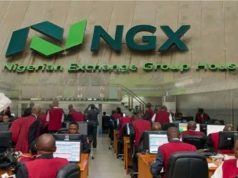MON, SEPT 11 2023-theGBJournal |The Naira’s depreciation can be attributed to a complex interplay of various factors, each contributing to the currency’s ups and downs.
Liquidity Constraints: Within Nigeria’s financial system, liquidity constraints posed a formidable challenge. As liquidity levels fluctuated, so did the Naira’s stability, adding uncertainty to the markets.
Supply and Demand Dynamics: Imbalanced supply and demand dynamics further exacerbated the Naira’s troubles. Achieving equilibrium amid these fluctuations proved to be an elusive goal.
Shocking FX Reserves Revelation: The most shocking twist came on August 17, 2023, when a report from JP Morgan revealed a startling revelation about Nigeria’s net foreign exchange (FX) reserves.
The report unveiled a complex web of financial instruments, including foreign exchange forwards, securities lending, currency swaps, and outstanding contracts, which had eroded Nigeria’s net external reserves to an alarming low of $3.7 billion by the end of 2022.
This revelation sent shockwaves through the market, resulting in a short-term repricing of Nigerian international bonds and exacerbating the Naira’s depreciation in both official and parallel markets.
The Central Bank of Nigeria (CBN) contested this report, labelling it a misrepresentation, but the event underscored the paramount importance of transparency and integrity within the central bank.
Diaspora Remittances Diversion: The acting CBN Governor, Folashodun Shonubi, pointed to the diversion of diaspora remittances to unofficial channels, including the parallel market and unlicensed online platforms, as a major factor contributing to the Naira’s decline against the dollar.
CBN’s Response and the Return of BDCs:
In response to mounting pressure from Bureau De Change (BDC) operators, the CBN introduced a series of operational changes aimed at enhancing the efficiency and transparency of the Nigerian Foreign Exchange Market.
Under this revamped framework, BDC operators are now restricted to a permissible range of -2.5% to +2.5% of the Nigerian Foreign Exchange market window’s weighted average rate from the preceding day.
This move aims to address the significant backlog of unmet foreign exchange demand, estimated at a staggering $10 billion.
These FX backlogs have inflicted heavy losses on many firms and disrupted the economic ecosystem.-Analysis is provided by analysts at Comercio Partners Limited.
Twitter-@theGBJournal|Facebook-the Government and Business Journal|email:gbj@govbusinessjournal.com| govandbusinessj@gmail.com










